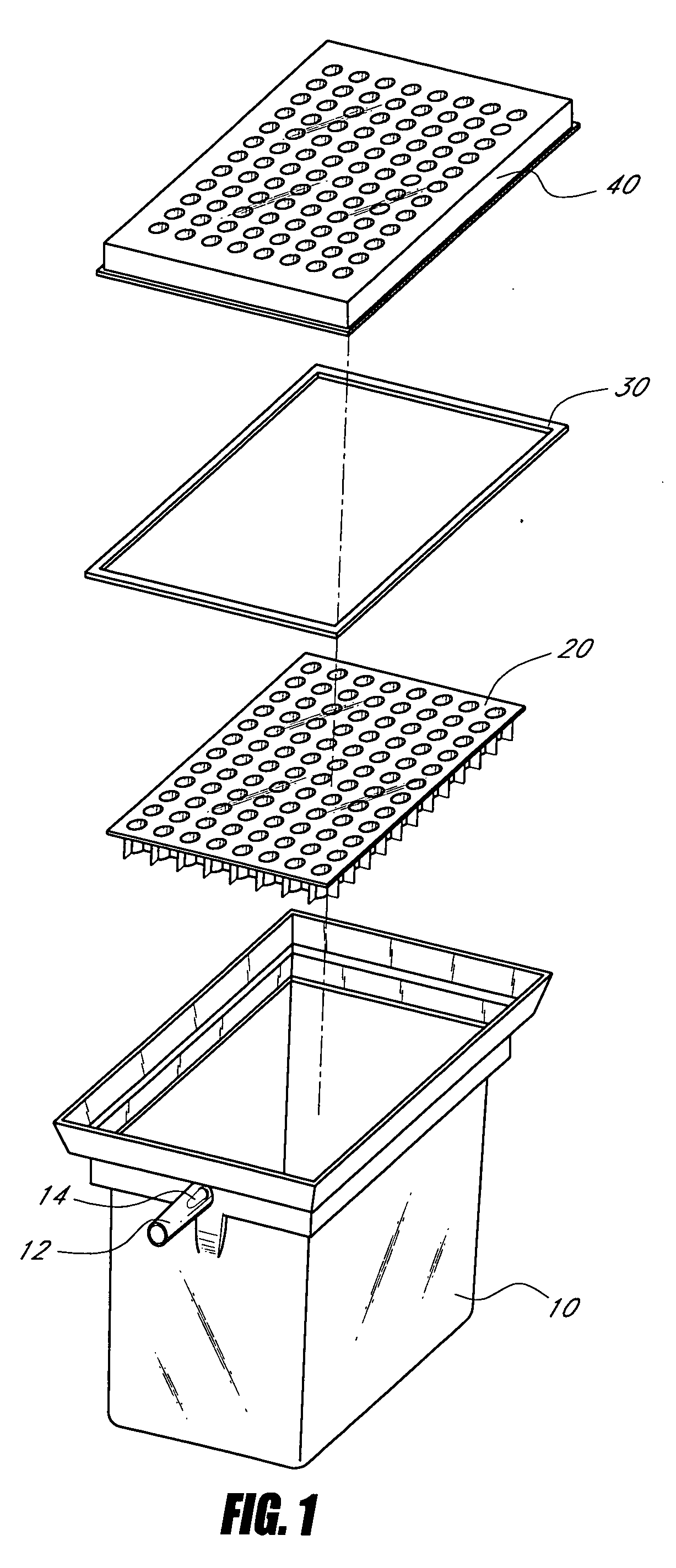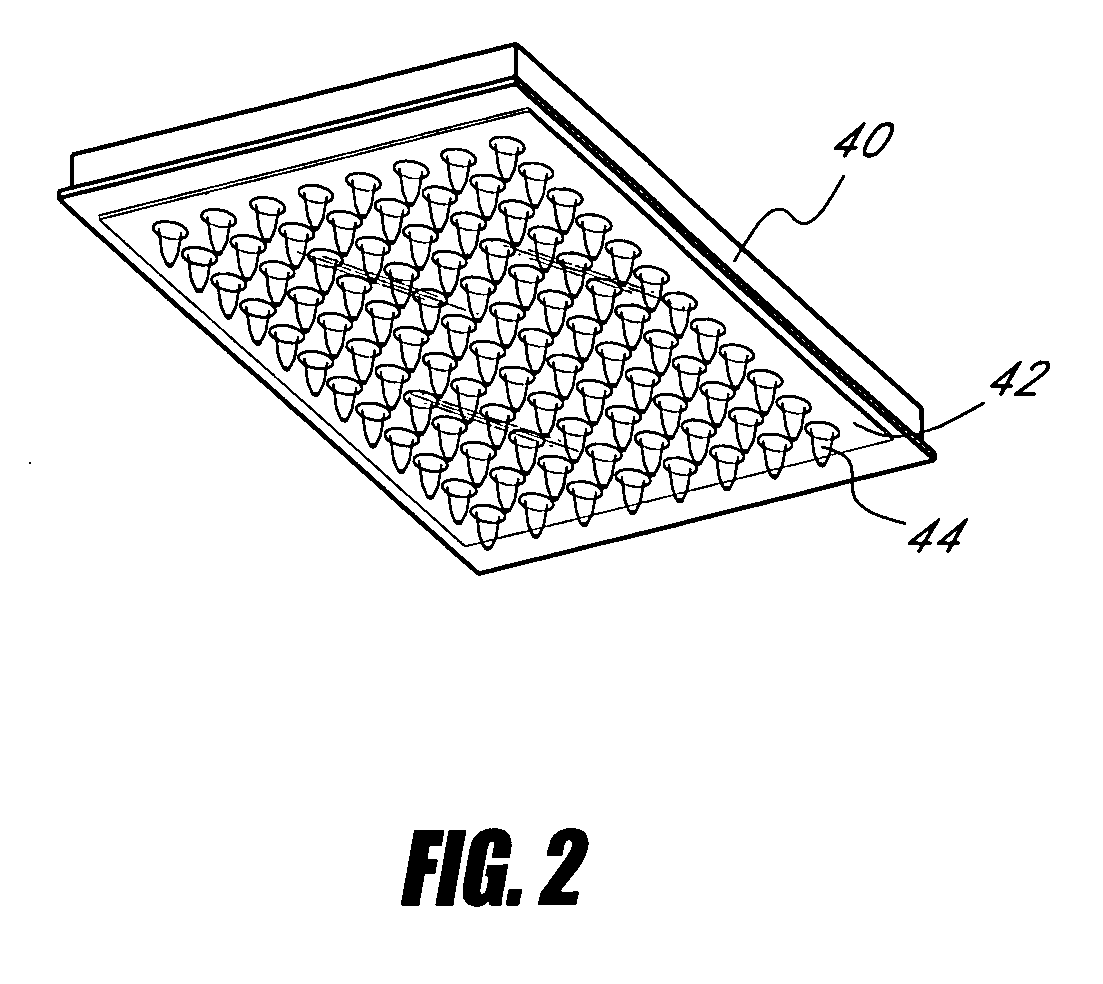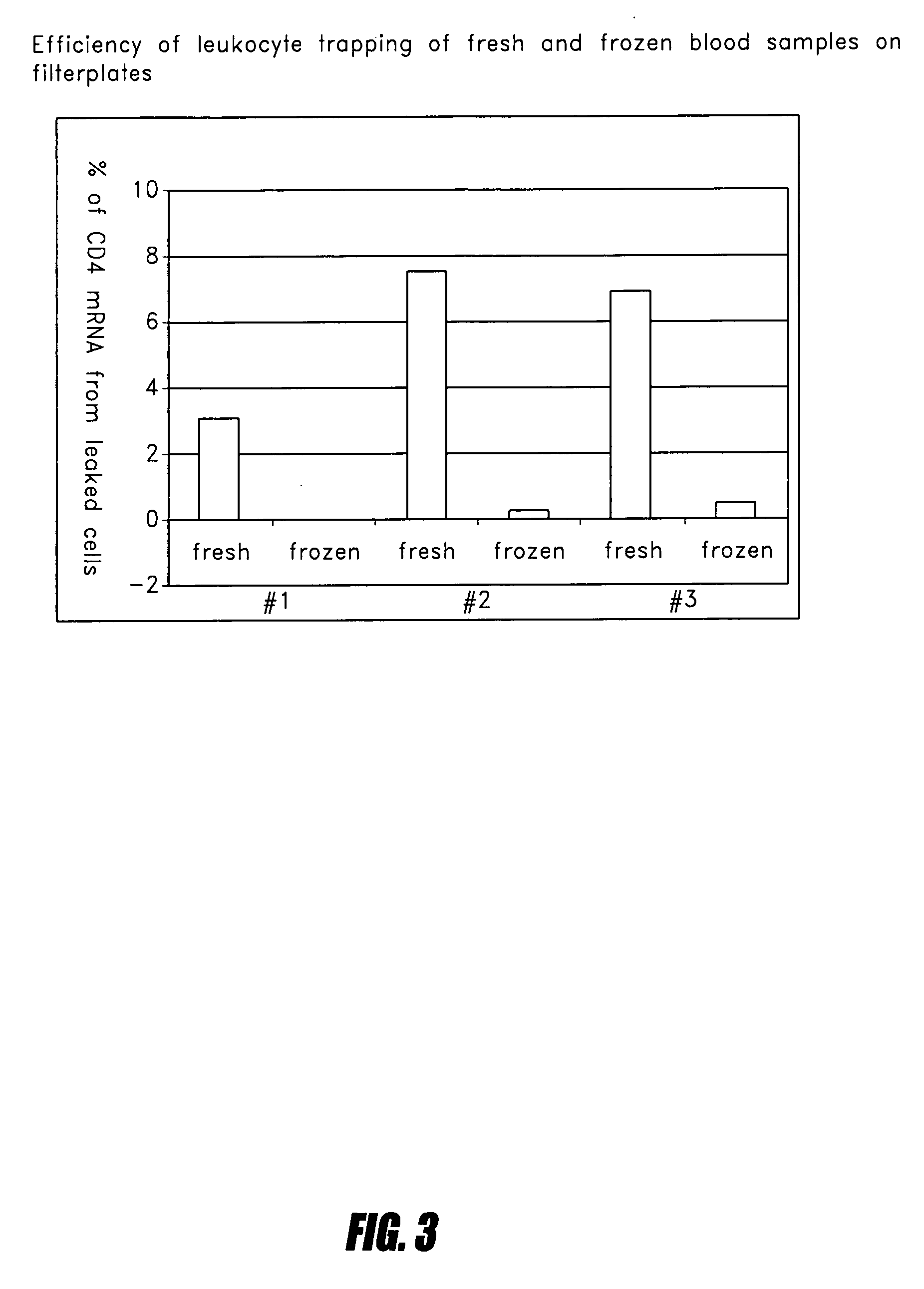Device and method for high-throughput quantification of MRNA from whole blood
a technology of whole blood and mrna, which is applied in the field of high-throughput isolation and quantification of mrna from whole blood, can solve the problems of large variation in gene expression analysis from institute to institute, and the value cannot be converted to the amount of the gene in the original materials, so as to reduce variation, reduce the coefficient of variation, and increase the yield of captured leukocytes
- Summary
- Abstract
- Description
- Claims
- Application Information
AI Technical Summary
Benefits of technology
Problems solved by technology
Method used
Image
Examples
example 1
[0090] Various protocols of the method of the present invention were tested and used to quantify β-actin mRNA and CD4 mRNA from whole blood.
[0091] Three anticoagulants were tested: ACD, EDTA, and heparin, with heparin resulting in the highest percent of leukocyte retention. While Leukosorb membranes have been used for ACD blood in transfusion, approximately 15-40% of leukocytes passed through even when four layers of membranes were simultaneously used. EDTA blood was tested; the capacity and leukocyte retention was found to be similar to those for ACD. Most notably, however, was that 100% of the leukocytes in heparin blood were trapped on the Leukosorb membranes. The capture of 100% of leukocytes from heparin blood shows the reliability of quantification of mRNA using the present invention. These data indicate that the use of heparin blood is most suitable for the precise quantification of mRNA, whereas ACD blood is useful for applications requiring larger volumes of blood and less...
example 2
[0099] Fifty μL of heparinized frozen human blood was applied to the Leukosorb filterplate. Each well was vacuumed and washed twelve times with 150 μL of 5 mM Tris pH 7.4 and 150 μL of 100% ethanol. Then, 40 μL of lysis buffer, which contains 1.707-1.856 M guanidine thiocyanate, was added to the well. After incubation at room temperature for 15 min, the filterplate was placed onto the GenePlate and centrifuged at 2000 rpm at 4° C. for 1 min. An additional 20 μL Lysis Buffer was added and the sample centrifuged for 5 minutes. After the GenePlate was incubated at room temperature for 2 hours, each well was washed with 100 μL Lysis Buffer 3 times, followed by three applications of 150 μL Wash Buffer (10 mM Tris, pH 7.4, 1 mM EDTA, pH 8.0, 0.5 M NaCl). The cDNA was synthesized in the GenePlate, and 2 μL cDNA was used for the TaqMan assay to quantitate CD4. The results are indicated in FIG. 11.
example 3
[0100] Fifty μL of heparinized frozen human blood was applied to the Leukosorb filterplate. Each well was vacuumed and washed twelve times 150 μL of 5 mM Tris pH 7.4, and 150 μL of 100% ethanol. Then, 40 μL of Lysis Buffer, which contains 1.791 M guanidine thiocyanate with 0-0.5 mg / ml proteinase K, was added to the wells. After incubation at room temperature for 15 min, the filterplate was placed onto the GenePlate and centrifuged with 2000 rpm at 4° C. for 1 min. An additional 20 μL of lysis buffer was added and centrifuged again for 5 min. After the GenePlate was incubated at room temperature for 2 hours, each well was washed with 100 μL Lysis Buffer 3 times, followed by 150 μL Wash Buffer (10 mM Tris, pH 7.4, 1 mM EDTA, pH 8.0, 0.5 M NaCl) 3 times. The cDNA was synthesized in the GenePlate, and 2 μL cDNA was used for TaqMan assay to quantitate CD4. The results are indicated in FIG. 12.
PUM
| Property | Measurement | Unit |
|---|---|---|
| pH | aaaaa | aaaaa |
| pH | aaaaa | aaaaa |
| real time PCR | aaaaa | aaaaa |
Abstract
Description
Claims
Application Information
 Login to View More
Login to View More - R&D
- Intellectual Property
- Life Sciences
- Materials
- Tech Scout
- Unparalleled Data Quality
- Higher Quality Content
- 60% Fewer Hallucinations
Browse by: Latest US Patents, China's latest patents, Technical Efficacy Thesaurus, Application Domain, Technology Topic, Popular Technical Reports.
© 2025 PatSnap. All rights reserved.Legal|Privacy policy|Modern Slavery Act Transparency Statement|Sitemap|About US| Contact US: help@patsnap.com



